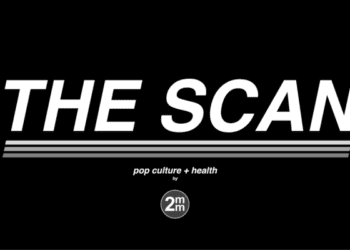Intravenous gadolinium-based contrast agents may deposit in brain tissue
1. Elemental gadolinium deposits in vascular endothelial and neuronal tissue in a dose-dependent fashion following intravenous administration despite normal renal and hepatobiliary function and an intact blood-brain barrier.
2. Gadolinium deposition increases whole-brain background T1-weighted signal on magnetic resonance imaging in a dose-dependent fashion.
Evidence Rating Level: 3 (Average)
Study Rundown: Prior to the widespread adoption of gadolinium-based agents for contrast enhancement of magnetic resonance imaging (MRI) studies, early research demonstrated a primarily extracellular distribution of these agents with near-complete clearance through renal excretion, with the remainder lost through hepatobiliary excretion. Though later cases of cytotoxic gadolinium skin deposition and nephrogenic systemic fibrosis occurred in patients with renal dysfunction receiving intravenous gadolinium-based agents, the agent was considered to remain on the vascular side of the blood-brain barrier and leave no tissue residue after clearance. However, recent studies have shown an increase in site-specific T1-weighted signal intensity after clearance of gadolinium-based contrast in MR-based neurological imaging, suggesting that gadolinium may remain within specific tissues despite systemic clearance. The current study sought to determine the extent to which gadolinium may invest in neuronal tissues following contrast-enhanced MRI as compared to contrast naïve patients, and examine if background T1-weighted signal intensity differs between these groups. Using a combination of inductively coupled plasma mass spectrometry (ICP-MS), transmission electron microscopy (TEM), and light microscopy (LM) of brain autopsy samples, gadolinium deposits were detected in all sampled areas in patients with a minimum of four lifetime doses of gadolinium-based contrast. These deposits were found in both the capillary endothelium and within the neuronal interstitium in areas absent of a pathological disruption in the blood-brain barrier, suggesting that it may distribute intracellularly, contrary to prior data. The concentration of these deposits correlated linearly with the lifetime contrast dose administered. Additionally, there was found to be an increase in background precontrast T1-weighted signal intensity on MRI scans performed prior to death. The study was limited in that it did not assess the mechanism or clinical significance of gadolinium deposits, both in terms of symptomatology or phenotype. Moreover, as tissue preparation techniques only allowed for quantification of elemental gadolinium without regard to its state as either a free ion or a chelate, an understanding of the relative toxicity of the deposit and if it came to exist by transmetalation, direct diffusion, or active transport was not obtainable. Future studies into both the basic mechanism by which gadolinium deposits within tissues and where it localizes throughout the brain and other organs is warranted, particularly if clinical significance can be determined.
Click to read study in Radiology
Relevant Reading: Biodistribution of gadolinium-based contrast agents, including gadolinium deposition
In-Depth [case-control study]: A total of 23 deceased patients were examined, 13 in the contrast group, imaged primarily for primary or metastatic CNS malignancies, and 10 control subjects, imaged for a variety of diseases including seizure, trauma, and vascular disease (including stroke and hemorrhage.) Those in the contrast group underwent between 4 and 29 contrast-enhanced studies, and died at a significantly younger age than the control group (51 years vs. 83.5 years; p < 0.0001). Baseline renal function was significantly better in the contrast group than the control group, and hepatobiliary function was similar between the groups. Gadolinium exposure caused a significant positive dose-to-T1-weighted-signal-intensity correlation across the entire brain as compared to the normalized intensity in control studies (p < 0.02). While gadolinium deposits could not be detected by light microscopy, they were visualized within the vascular endothelium and the neuronal interstitium on TEM, despite an intact blood-brain barrier. ICP-MS of samples retrieved from the globus pallidus, thalamus, dentate nucleus, and pons revealed gadolinium concentrations of 0.3-58.8mg/g of tissue, with a linear correlation between lifetime contrast dose and tissue concentration (r = 0.96-0.99; p < 0.001). The highest average gadolinium concentrations were found in the dentate nucleus. A weakly significant correlation between renal function and tissue gadolinium concentration was also identified (p = 0.05), and of all other factors examined, lifetime gadolinium dose was the only strongly significant factor identified with regard to deposit concentration.
Image: CC/Hi-res Images of Chemical Elements/Wiki
©2015 2 Minute Medicine, Inc. All rights reserved. No works may be reproduced without expressed written consent from 2 Minute Medicine, Inc. Inquire about licensing here. No article should be construed as medical advice and is not intended as such by the authors or by 2 Minute Medicine, Inc.




![The ABCD2 score: Risk of stroke after Transient Ischemic Attack (TIA) [Classics Series]](https://www.2minutemedicine.com/wp-content/uploads/2013/05/web-cover-classics-with-logo-medicine-BW-small-jpg-350x250.jpg)

![Type I diabetes not associated with early menopause [OVADIA study]](https://www.2minutemedicine.com/wp-content/uploads/2014/12/diabetes1_edited-75x75.jpg)
